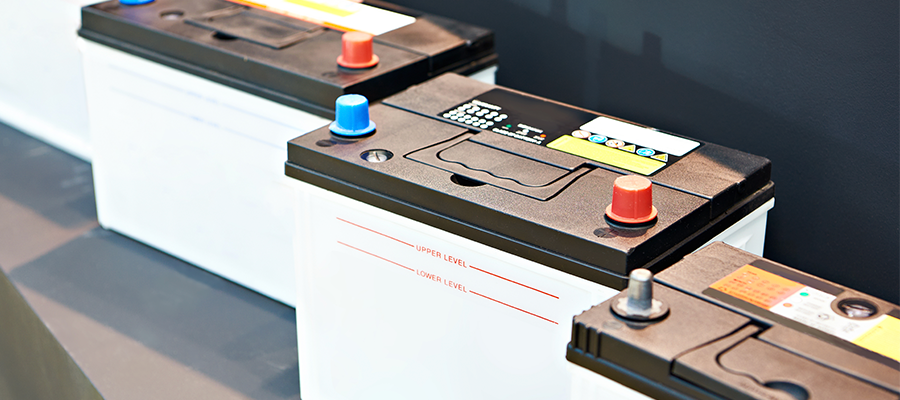
How to properly store your battery
Periods of inactivity can be extremely harmful to lead-acid batteries. When placing a battery into storage, follow the manufacturer’s recommendations and/or the recommendations below to ensure that the battery remains healthy and ready for use. The most important things to avoid:
- Avoid locations where freezing temperatures are expected. Keeping batteries at a high state of charge will also prevent freezing. Freezing results in irreparable damage to battery plates and containers. NOTE that if a battery is kept completely charged, the chances of freezing are minimal.
- Avoid direct exposure to heat sources, such as radiators or space heaters. Temperatures above 80ºF / 26ºC accelerate the battery’s self-discharge characteristics. NOTE that heat causes more damage to a battery than cold ever will so keep your battery storage area as cool as possible.
- NOTE that storing your battery on concrete will not damage your battery!
Step-by-step storage procedure
- Completely charge the battery before
- Store the battery in a cool, dry location, protected from the
- During storage, monitor the specific gravity (flooded) or voltage. Batteries in storage should be given a boost charge when they show a charge of less than 75% or approximately 12.40 volts for a 12-volt battery. See the “Open Circuit Voltage” table
- Completely charge the battery before re-activating.
- For optimum performance, equalize the batteries (flooded) before putting them back into service. Refer to the Equalizing section for this procedure.
WARNING – DO NOT EQUALIZE CHARGE GELL OR AGM BATTERIES! Equalizing is an “over voltage-over charge” performed on flooded lead-acid batteries after they have been fully charged to help eliminate acid stratification. It helps to eliminate the acid stratification and sulfation that happens in all flooded lead acid batteries. Acid Stratification is the #1 killer of flooded lead acid batteries.
Laboratory-designed, specific to Discover, “Balance” charge algorithms have been designed and are included in all Discover recommended Industrial Commercial charges offered for sale wherever our Discover AGM and GELL VRLA DRY CELL products are sold. Visually the Balance Charging curve diagram is similar to a flooded equalize charge curve in its finishing voltage. Still, it is strictly controlled to promote proper active material conversion and not to promote gassing or bubbling of the acid to help reduce acid stratification, as in a flooded battery. Discover’s Balance charging algorithms are HIGHLY recommended for batteries being installed in strings, larger batteries using taller plate groups and/or with batteries constantly being subjected to high-rate deep-cycle.
Battery Council International BCIS-04 Rev. Draft Dec02 3.8.2 states that for Flooded batteries, “An equalizing charge is allowed in conjunction with constant voltage charging to promote electrolyte mixing and to ensure complete recharge. The equalizing charge must not exceed 3 hours and should be used cautiously to avoid excessive overcharge. For VRLA DRY CELL batteries, no equalizing charge should be used unless specifically recommended by the manufacturer.”
